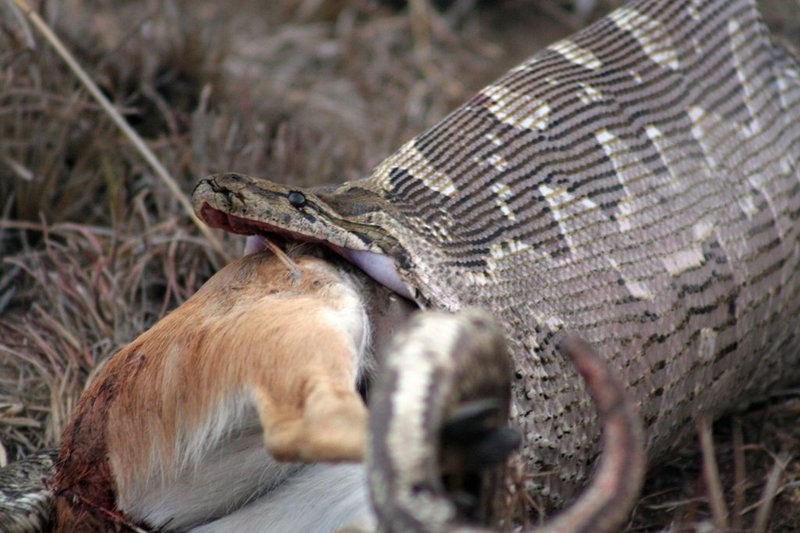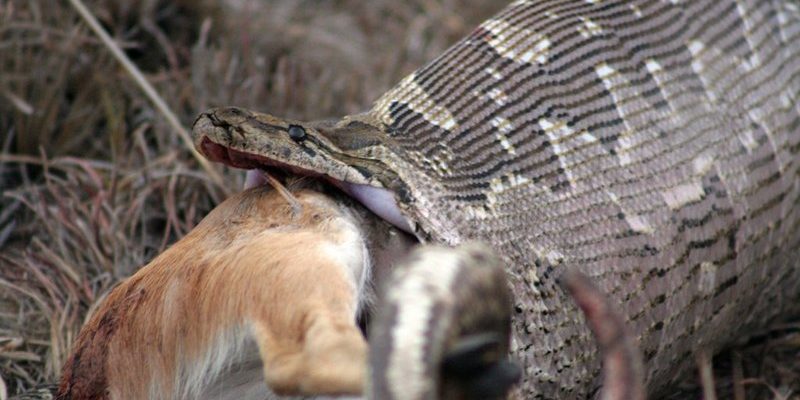
Imagine being a snake for a moment. You’re a master of stealth, using your senses to track down prey, and you have some cool adaptations that help you do it all. From constrictors to venomous species, each snake has its own hunting style and diet. Let’s dive into the world of snakes and explore what they eat and how their hunting methods work.
What Do Snakes Eat?
Snakes are carnivores, which means they primarily eat meat. But what does that actually mean for their diet? Well, it varies widely depending on the species. Some snakes prefer rodents, while others might go for birds, amphibians, or even other snakes. Here’s a closer look:
- Rodents: Mice and rats are favorites among many snakes, like the common boa constrictor.
- Birds: Some snakes, like the rat snake, have mastered the art of climbing trees to snag unsuspecting birds.
- Amphibians: Frogs and toads can be the main dish for many smaller snake species.
- Fish: Water snakes often have fish on the menu, effectively using their swimming skills to catch them.
- Other Snakes: Yes, some snakes, like the king snake, will eat other snakes as a part of their diet.
This variety in diet showcases how adaptable snakes are. A snake’s meal depends largely on its size and habitat. For instance, a small garter snake will hunt differently compared to a massive anaconda. Let’s dig a little deeper into how these incredible creatures hunt for their food.
How Do Snakes Hunt?
Snakes have developed unique hunting strategies that help them track down and capture prey. Unlike mammals, they rely heavily on their other senses. Here’s a breakdown of their techniques:
- Ambush Hunting: Many snakes, like the Gaboon viper, prefer to stay hidden. They wait for the perfect moment to strike when prey comes too close.
- Active Hunting: Some snakes, such as garter snakes, actively search for food. They’ll slither through their environment, looking for movement.
- Tracking with Tongues: Snakes have a special organ called the Jacobson’s organ that allows them to “taste” the air. By flicking their tongue, they can pick up scent particles and locate prey from a distance.
- Using Camouflage: Many snakes have skin patterns and colors that help them blend into their surroundings, making it easier to ambush unsuspecting prey.
You might be wondering about the role of venom in hunting. While not all snakes are venomous, those that are can deliver a potent toxin to immobilize or kill their prey quickly. For instance, cobras and rattlesnakes use venom to subdue their meals, making the hunt easier.
How Do Snakes Capture Their Prey?
Once a snake has found its meal, the next step is capturing it. Snakes have a few different methods for this process:
- Constriction: Many non-venomous snakes, like pythons and boas, wrap their bodies around their prey and squeeze. The pressure prevents the prey from breathing, leading to a swift end.
- Envenomation: Venomous snakes, like the black mamba, bite their prey, injecting venom that can paralyze or kill. This method allows them to consume larger animals without needing to struggle too much.
- Swallowing Whole: Snakes can unhinge their jaws, which helps them swallow prey whole, even if it’s larger than their head! This is because their jaws are connected by stretchy ligaments.
Isn’t that fascinating? The way snakes adapt and use different techniques just shows how they’ve evolved to survive in their environments.
The Digestive Process of Snakes
After a successful hunt, a snake’s digestive system kicks into gear. Here’s what typically happens during the digestion process:
1. Swallowing: As mentioned before, snakes consume prey whole. This can take some time as they work to fit the meal down their throat.
2. Digestive Enzymes: Once the prey is in their stomach, snakes secrete digestive enzymes to break down the meat. This process is quite efficient, often taking several days to fully digest.
3. Absorption of Nutrients: After breaking down the food, the snake’s body absorbs the nutrients through its intestinal walls. This process provides energy that fuels their activities.
4. Excretion: Finally, any undigested parts are expelled from the snake’s body. This can include fur, bones, or feathers, depending on what they’ve eaten.
You might be surprised to learn that a snake can go weeks or even months without eating after a big meal, depending on the size of the prey and the species. It’s an incredible testament to their efficiency and adaptability!
How Hunting Adaptations Help Survival
Hunting is about more than just catching lunch; it’s a vital skill that helps snakes survive. Their unique adaptations contribute to their success in the wild. Here are a few important aspects:
- Sense of Smell: Snakes rely heavily on their sense of smell, using their tongues to detect chemicals in the air to locate prey or sense danger.
- Camouflage: Their natural coloring helps them blend in with their surroundings, increasing their chances of making a successful ambush.
- Speed: Snakes are fast movers! Some can strike in milliseconds, giving them the upper hand against their prey.
- Venom Adaptations: The potency and type of venom vary greatly among species, allowing them to take down prey of different sizes effectively.
These adaptations not only aid them in capturing food but also help them avoid becoming someone else’s dinner. It’s a cycle of predator and prey that keeps nature in balance.
The Impact of Habitat on Hunting and Diet
A snake’s habitat plays a significant role in determining its diet and hunting techniques. Let’s consider a few different environments:
- Forests: Snakes like the emerald tree boa thrive in trees, hunting birds and small mammals. Their camouflage helps them blend into the branches.
- Deserts: In arid environments, snakes adapt by becoming nocturnal, hunting at night when it’s cooler. They might prey on lizards and small rodents.
- Water Bodies: Water snakes are adept swimmers, allowing them to hunt fish and amphibians. Their ability to stay submerged gives them an advantage.
- Urban Areas: Some snakes have adapted to urban settings, feeding on rodents attracted to human food sources. They often rely on the cover of debris or shrubs for hunting.
Each habitat presents unique challenges and opportunities. Snakes have evolved to make the most of their surroundings, showcasing just how versatile they can be.
So, there you have it! Snakes are incredible hunters with a diet that reflects their adaptability and skill. From their method of stalking prey to their unique digestive processes, each aspect of their hunting is fascinating. Whether they’re using venom to take down their meal or quietly waiting for the perfect moment to strike, it’s clear that they’ve perfected the art of survival.
Next time you see a snake, you might just appreciate its role in nature a little more. They’re not just scary creatures; they’re expert hunters, playing a vital role in maintaining the balance of ecosystems. Understanding what they eat and how they hunt gives us a new perspective on these amazing reptiles.

